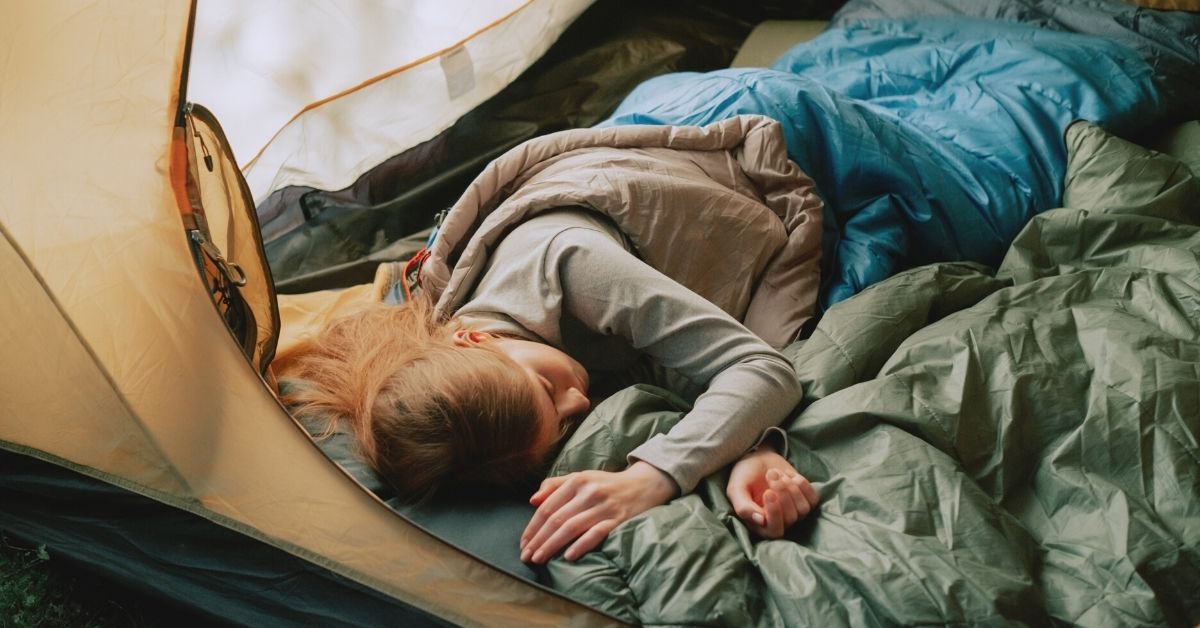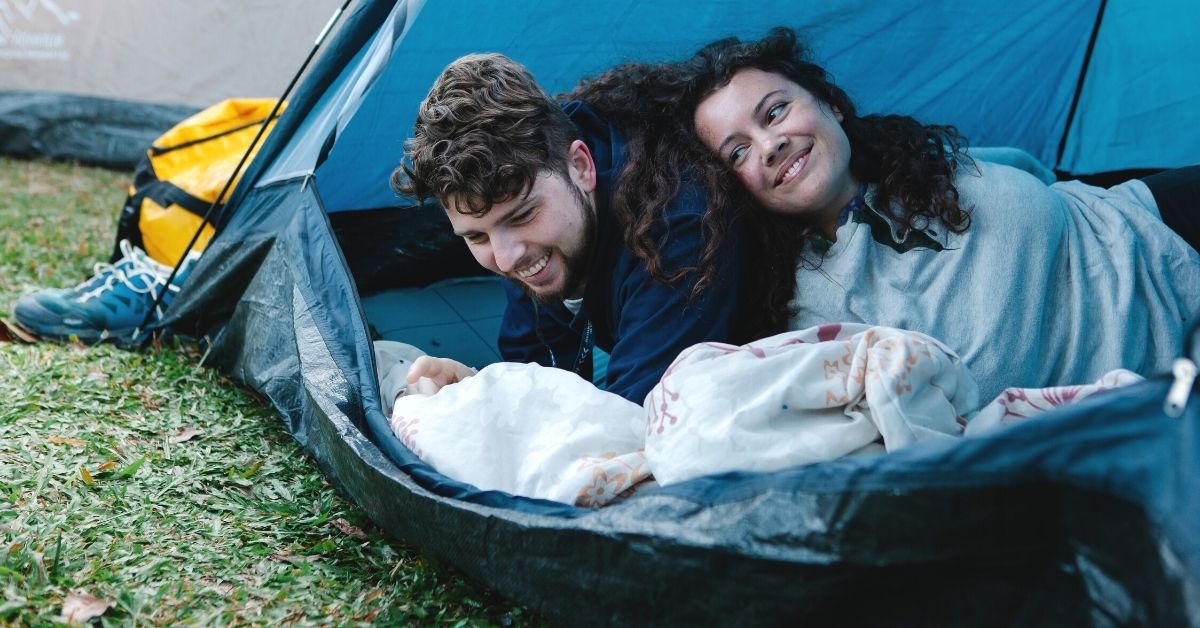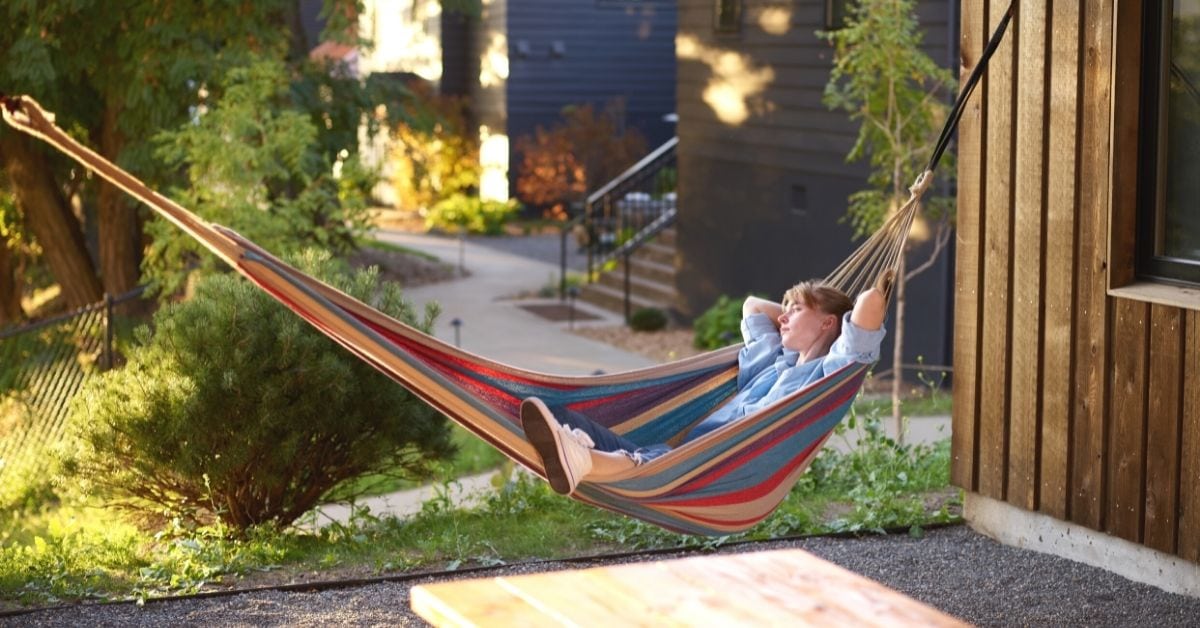If you are planning your next camping trip and thinking about what you’ll be sleeping on, chances are you will opt to take an air mattress.
But we all know that air mattresses are not always ideal.
In this guide, we are going to go over the best alternative to air mattresses, including some obvious options… and a few you may not have thought of!
We also give you an example of a great product in each category and the features that make them such good camping bed solutions.
Depending on the type of camping trip you are taking – and how much room you have available for your gear – will an air mattress really be the best option?
That said, there are other reasons to look for alternatives to air mattresses.
By the end of this guide, I’m sure your future guests will thank you!

Why Use An Alternative To Air Mattress
There are lots of reasons why air mattresses are the popular choice for camping trips.
The most obvious is comfort, particularly for people who are quite new to camping and trying to replicate the comfort of their bedroom mattress as closely as possible!
Blow-up mattresses have other great benefits too. They tend to be relatively thick once inflated, keeping you well off the ground and away from possible dampness and creepy crawlies!
They are also pretty straightforward to use and often very affordable.
But there are also a few cons to consider – and if you are looking for an air mattress alternative for camping, then you may have already discovered a few of these for yourself!
Air mattresses are not the most portable camping bed solutions – they can be quite bulky, and some are pretty heavy too, making them really only suited to trips where you will be driving to your campsite.
They can take a while to set up and ready for use, which can be frustrating if you are looking forward to getting out exploring on arrival at your camp!
By the same token, it can take extra time to deflate them and roll them up when it’s time to pack everything away.
You will need to carry a pump with you unless you feel like setting aside the minimum of 30 minutes that it would take to blow the mattress up manually!
They provide very little support for your back, and the ‘bounce effect’ you experience every time you turn over can really disturb your sleep.
But the biggest downside of all is how prone air mattresses are to punctures.
If you’ve ever experienced the sinking feeling of waking up on a deflating mattress halfway through the night, then you’ll appreciate just how annoying of a problem it actually is.
Trying to repair a puncture at that point is not easy – and the vulnerability to multiple punctures over time means that air mattresses need often replacing, so they can be an expensive choice in the long term.
Good Air Mattress Alternatives
If you are trying to find the perfect air mattress alternative for camping, here are all your options. Remember that not all of these solutions will meet every criterion you have.
For example, one solution may be more portable than an air mattress but less comfortable.
So it is essential to think carefully about the type of camping trip you will be taking so you can choose an option that will best suit your needs.
Futon
The pros and cons of using a futon as an alternative to an air mattress are clear!
It is, of course, the most comfortable option of all – so comfortable that people use futons in their homes every day as guest beds for visitors.
No inflation is required – just roll it out, and it’s ready to use. When it’s time to go home, all you need to do is roll it back up and secure it with a cord.
It will keep you warm and provide plenty of support for your back, so you will wake up each morning feeling totally refreshed.
If you want your camping bed to be as close as possible to your bedroom mattress, then a futon is the way to go.
This Japanese Floor Futon Mattress is great for camping – it is super thick and comfy, and designed to roll up easily, fitting neatly into the bag that comes with it. It is great value for money, as you can easily use it at home too.
Of course, its large shape and size make it suitable only if you drive to your camping site, and it obviously wouldn’t be suitable for backpacking.
Foam Sleep Pad
Before air mattresses became popular, these were the traditional camping bed solutions!
Yet a foam pad is a very attractive alternative to an air mattress for camping – mostly because it is puncture-proof and so much lighter.
It’s very easy to simply roll one up and attach it to the outside of your backpack, so it doesn’t even take up space in your gear.
You can’t do this with an air mattress, of course, as there is always the risk of it puncturing. No pump is required for a foam pad and there is nothing to do when you set up camp other than roll it out!
These pads range in thickness from under an inch to several inches, and they are made of dense foam with very small, closed air cells, so they have great insulating properties.
You do have to bear in mind, though, that they are thinner than air mattresses. This means they will feel more uncomfortable to some people and need to be spread on very even ground.
The TETON Sleeping Pad makes an excellent alternative to an air mattress. It is thick – enough to keep you comfy – packs down to a small size and weighs just 4 kilos.
It makes an excellent barrier against the cold ground, and its lateral baffles stop it from curling around you during the night.
Self-Inflating Sleep Pad
Lying somewhere between an air mattress and a foam pad is the self-inflating sleep pad.
Whereas a basic foam pad has closed air cells, a self-inflating pad is made with open-cell foam. When the valve is opened, these cells automatically suck in air and the pad inflates – you don’t need to lift a finger!
The beauty of this design is that you can adjust it to be as firm as you like by adding or removing air.
There are a few disadvantages to using a self-inflating mattress – like a standard air mattress, they are vulnerable to punctures (although they are easier to repair).
And you are quite a bit lower to the ground than you would be with an air mattress, so you need to make sure you use it somewhere flat and even. But for many people, these problems are far outweighed by the advantages!
Self-inflating mattresses tend to be nice and comfortable, whilst that mixture of air and foam provides lots of insulation to keep you warm. There is no ‘bounce effect’, no need for a pump, and they are lightweight and very portable.
The popular Wellax UltraThick FlexFoam Sleeping Pad is one of the best air mattress alternatives for camping – at 3 inches thick, it is exceptionally comfortable, resistant to tearing, and folds to a compact size.
Hammock
There are some definite pros and cons to using portable hammocks as an air mattress alternative for camping as they don’t necessarily suit everyone.
Using a hammock means you are sleeping out in the open rather than in a tent, but this can make your camping trip a lot more exciting and brings you a lot closer to nature!
You need to bear in mind that you may feel colder and dress accordingly, but it is possible to shield yourself from light rain by either buying a hammock with an integrated cover or by rigging up a tarp over your sleeping area.
Some hammocks come with a bug screen too, which can be essential for some areas.
The great thing about hammocks is that they are exceptionally lightweight, and made from the same strong material used for parachutes.
This means that they are perfect for backpacking.
It feels much nicer to sleep in the fresh air rather than in a stuffy tent, and because you are off the ground you are safe from puddles and insects!
Many modern hammocks use a loop system to attach them to trees, so you don’t need to worry if your knotting skills are not quite up to scratch!
A great example is this fabulous hammock from Wise Owl Outfitters.
Weighing just 24 ounces and packing down to the size of a grapefruit, it comes with tree straps and carabiners for quick and easy set-up.
Camping Cot
This is a lightweight bed composed of a sturdy frame and flat, board-like top, usually covered in a durable material like canvas.
One of the main advantages is durability – these are sturdy beds that will last for years!
What’s more, they keep you right off the ground – away from dampness and bugs – and can make it so much easier to get into and out of bed than a mattress on the ground.
You also get the great advantage of all that space under the bed for storage!
Of course, a camping cot is totally unsuitable for backpacking and can only be used if you will be driving to your campsite.
This is because most models are somewhere between 15 and 25 lbs in weight!
If you do buy a cot, remember that the feet may damage the floor of your camping tent, so it’s a good idea to bring along a tarp or even a blanket to protect it. Furniture caster cups work well too, plus they don’t take up much room.
The best-selling Coleman Trailhead II Cot is perfect if you are looking for an alternative to an air mattress.
It is incredibly good value for money and has a strong cross-bar steel frame that you can be confident will see you through many trips! It comes with a handy carrying case, with the instructions stitched inside.
Bean Bag Chairs
You may be thinking that a bean bag chair is too small to use as an alternative to an air mattress for camping, but CordaRoy’s Chenille Bean Bag Chair is the exception.
This product’s innovative design allows you to turn it from a chair to a bed – effectively killing two birds with one stone!
Soft, supportive, and very comfortable, the bean bag has a removable, machine-washable cover, with an extra-long zipper that makes it easy to take on and off.
This is quite an expensive product, although the fact that you could easily use it as an extra chair/bed at home may make it worthwhile for you. It is also quite bulky and heavy, but it’s a great option for a camping mattress for couples.
Sleeping Bags
Do you really need a camping mattress at all?
Most of us will say yes – but if you are one of the hardy ones that can manage without, it is possible to have a comfortable night with just a sleeping bag!
Ideally, you should use natural materials like pine needles or leaves to create some padding and insulation underneath – or, if car camping, you could bring a thick comforter from home.
The Asout Wide Sleeping Bag is a good choice if you decide to take this option.
It has a super warm filling, which you will need if you are sleeping directly on the ground, and also has a drawstring at the neck to help you keep heat in and stay snug.
Final Thoughts On Alternatives to Air Mattresses
Hopefully, this guide has helped you decide which air mattress alternatives might work for you.
Don’t forget to bring a wool blanket for camping if the temperatures are cold.
To summarize, a lightweight option such as a foam pad or hammock would be the best choice if you are backpacking and weight is an issue.
If you are driving to your campsite, you have many more options, with the futon probably topping the list in terms of comfort (especially if you’re planning on using it for your upcoming guests too).
Are you traveling with a backpack? Take a look at your options to learn how to attach sleeping bag to backpack.










